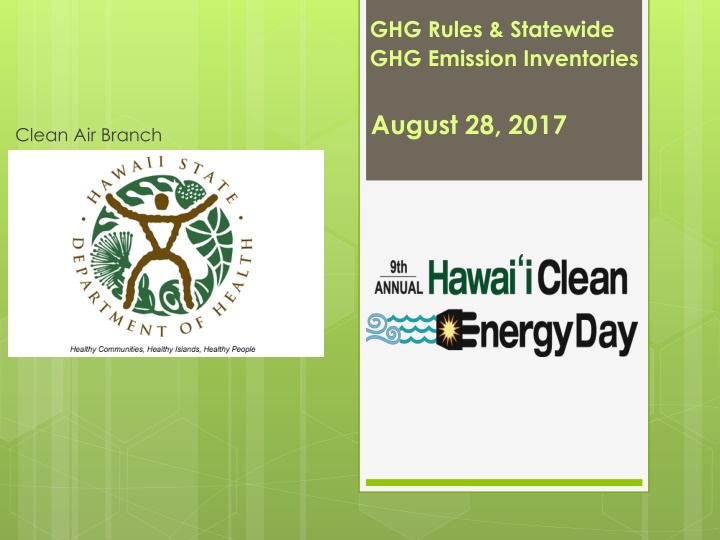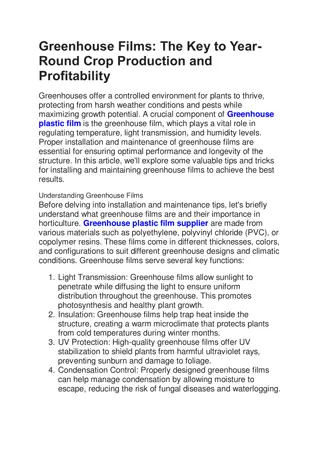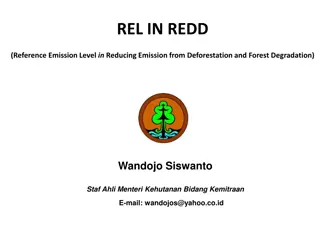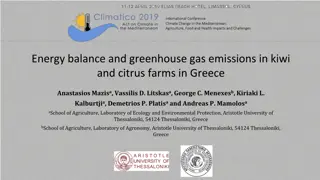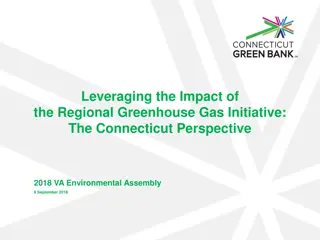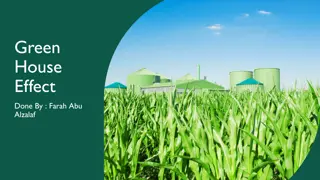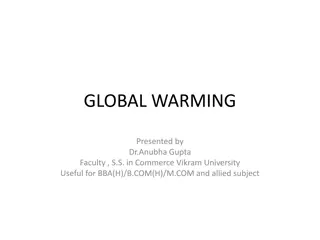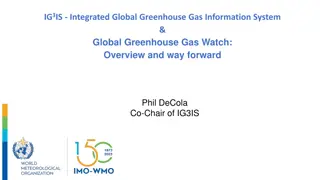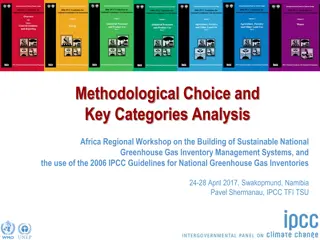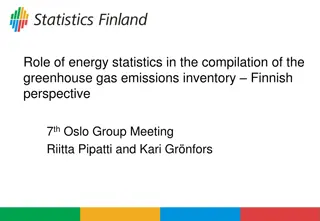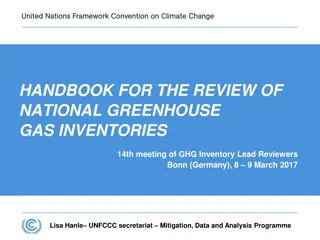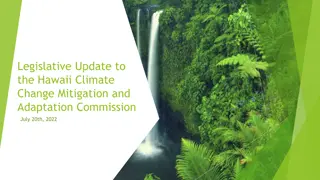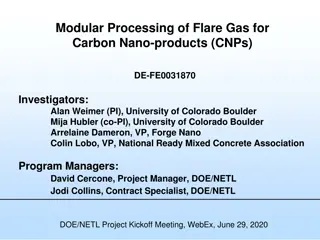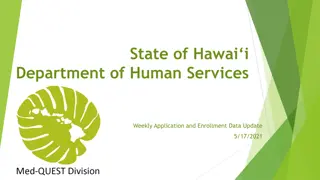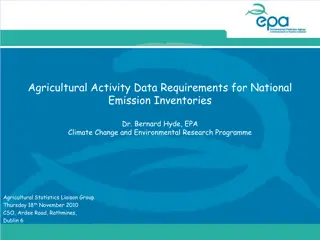Hawaii Statewide Greenhouse Gas Emission Rules Overview
The Hawaii Statewide Greenhouse Gas (GHG) Emission Rules implemented by Act 234 in 2007 aim to limit statewide GHG emissions to 1990 levels by 2020. The rules include setting emission caps for stationary sources, conducting annual evaluations to track progress, and reporting GHG inventories regularly. The regulations prioritize reducing emissions from various sources and aim to enhance environmental sustainability in Hawaii.
Download Presentation

Please find below an Image/Link to download the presentation.
The content on the website is provided AS IS for your information and personal use only. It may not be sold, licensed, or shared on other websites without obtaining consent from the author.If you encounter any issues during the download, it is possible that the publisher has removed the file from their server.
You are allowed to download the files provided on this website for personal or commercial use, subject to the condition that they are used lawfully. All files are the property of their respective owners.
The content on the website is provided AS IS for your information and personal use only. It may not be sold, licensed, or shared on other websites without obtaining consent from the author.
E N D
Presentation Transcript
GHG Rules & Statewide GHG Emission Inventories August 28, 2017 Clean Air Branch Hawaii Clean Energy Day 2017
Introduction The GHG Rules are required by Hawaii Act 234, 2007. Sets statewide greenhouse gas emissions limit to equal or below 1990 levels by 2020 (13.66 million metric tons per year of CO2e, excluding aviation and international bunker fuel emissions and includes carbon sinks). Prior 2007 Statewide GHG Emissions Inventory from ICF. 2007
GHG Emissions CAP To help meet goal GHG emission cap specified for stationary sources. Potential CO2e emissions threshold of 100,000 tons/year. Cap is set at 16% below facility s baseline emission level unless alternate cap is approved if 16% reduction cannot be achieved. Use 2010 or as baseline or alternate approved baseline emission level for establishing the cap. Statewide Stationary Source GHG Emission Levels 16% reduction* Year 2010 Year 2020 * 13.2% + Factor of Safety = 16% Reduction
Stationary Sources (18)
GHG Rules HAR 11-60.1-204(k) DOH must conduct annual evaluations to determine progress in achieving the statewide GHG emissions limit. If DOH determines that the statewide GHG emissions limit is met before 2020, the GHG cap is no longer applicable to the affected facilities.
Statewide GHG Inventories ICF Incorporated, L.L.C Provide three annual reports with: 1) Updated Statewide GHG emissions for prior inventories (1990, 2007, & 2010); 2) Compile new 2015, 2016, and 2017 statewide GHG inventories; and 3) GHG Projections for 2020 and 2025. Evaluate EPA State Inventory and Projection Tool.
Update Prior GHG Inventories Update Prior Statewide GHG Inventories Prior and Updated Statewide GHG Inventories (1990 & 2007) (Excluding Aviation and International Bunker Fuel Emissions and Including Carbon Sinks) 20.00 18.00 16.00 Updated 14.00 Prior Updated CO2e (MMT) 12.00 Prior 10.00 Changes include updated: 17.30 16.70 8.00 GWPs; Fuel consumption data; and GHG emission factors. 14.11 13.66 6.00 4.00 MMT= Million Metric Tons 2.00 0.00 1990 2007 Emissions Year Prior CO2e Emissions (MMT) Updated CO2e Emissions (MMT)
Status Where s Program Now? Received GHG Emission Reduction Plans from 18 Affected Facilities. DBEDT, DOT, and DOH are providing data to ICF for compiling statewide GHG emission inventories. Initial annual report from ICF is expected early in 2018 that will Include: 1) New 2015 Statewide GHG Inventory; 2) Updated 1990, 2007, and 2010 GHG Inventories; and 3) Statewide GHG projections for 2020 and 2025. Annual report will be reviewed by DOH and other state agencies prior to finalizing.
Conclusions Conclusions Statewide GHG emission inventories will be used to track progress in achieving Statewide GHG Reduction Goals. Electric Power and Transportation Sectors are a large part of the Statewide GHG emissions. Thank You Clean Air Branch 586-4200 919 Ala Moana Boulevard, Room 203 CAB Home Page: http://health.hawaii.gov/cab/
